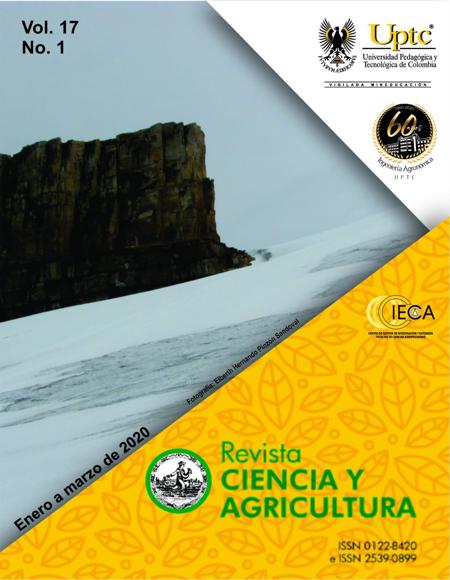Use of organophosphates by farmers in the community of Guaslán- Ecuador and hematological changes

Abstract
In Ecuador, the use of organophosphorus pesticides in agriculture has become a public health problem, according to bibliographic data, people exposed to these agrochemicals in occupational ways show alterations in their health. This study was focused on the assessment of hematological and morphological parameters of farmers exposed in an occupational way to these pesticides. It is an observational, descriptive cross-sectional and correlational study. In the community of Guaslán-Ecuador approximately 400 people are engaged in agriculture, of which 186 individuals were part of the study freely and voluntarily. 53% of the population were women, 47% men. The assessment of the blood count allowed to determine quantitative alterations such as: polyglobulia, leukocytosis, neutrophilia, lymphocytosis and platelet changes. Cellular morphology was assessed with the analysis of the peripheral blood smear that showed qualitative alterations in red, white and platelet cells. The most relevant findings were: neutrophils with toxic granulation, reactive lymphocytes, hypersegmentation, large platelets and stomatocytosis. Erythrocyte cholinesterase obtained 13% of the population. The 99% of the population presented at least one quantitative alteration and 80% qualitative alterations. Cholinesterase activity was inversely proportional to the exposure time. It is concluded that organophosphorus pesticides are capable of producing alterations at the cellular and enzymatic level. It is recommended to include the blood count and peripheral blood smear as markers of hemotoxicity in occupational tests or epidemiological profile for people exposed to this type of agrochemicals.
Keywords
blood count, cholinesterase, farmers, organophosphorus, public health
References
Campuzano, G. (2008). Utilidad del extendido de sangre periférica: los leucocitos*. Colombia. Recuperado de: https://www.medigraphic.com/pdfs/medlab/myl-2008/myl089-10b.pdf
Cobano, I. (2018). Indicadores de efecto en la prevención de intoxicaciones agudas por organofosforados y carbamatos. Universidad de Sevilla. Recuperado de: https://idus.us.es/xmlui/handle/11441/82626
Cortez, S. C. (2017). Evaluación de los parámetros hematológicos: Cuadro hemático y frotis de sangre periférica, en trabajadores expuestos a pesticidas organofosforados, carbamatos y piretroides. Cundinamarca 2016-2017. Bogotá D. C.: Universidad Nacional de Colombia. Recuperado de: http://bdigital.unal.edu.co/58052/1/53068721.2017.pdf
De Figueiredo, G. M., Trape, A. Z., & Alonzo, H. A. (2011). Exposição a múltiplos agrotóxicos e prováveis efeitos a longo prazo à saúde: Estudo transversal em amostra de 370 trabalhadores rurais de Campinas (SP). Revista Brasileira de Medicina Do Trabalho, 9(1), 1–9.
Diaz, V., Pistilli, N., Guillén, N., & Melgarejo, M.V. (2001). Valores Hematologicos en individuos expuestos accidentalmente a insecticidas organofosforados. Mem. Inst. Investig. Cienc. Salud, 1(1), 1-4.
Fernández, D., Mancipe, L., & Fernández, D. (2010). Intoxicación por organofosforados. SEMERGEN - Medicina de Familia, 33 (1), 21-23. https://doi.org/10.1016/S1138-3593(07)73839-X
Gallagher, S. A., & Hackett, P. H. (2004). High-altitude illness. Emergency Medicine Clinics of North America, 22(2), 329-355. https://doi.org/10.1016/j.emc.2004.02.001
García-García, C. R., Parrón, T., Requena, M., Alarcón, R., Tsatsakis, A. M., & Hernández, A. F. (2016). Occupational pesticide exposure and adverse health effects at the clinical, hematological and biochemical level. Life Sciences, 145, 274-283. https://doi.org/10.1016/j.lfs.2015.10.013
Group EBMT (2011). Trombocitopenia inmune. Recuperado de: https://www.ebmt.org/sites/default/files/migration_legacy_files/document/EBMT_Practical_Guides_for_Nurses_Immune_Thrombocytopenia_Spanish.pdf
Hongsibsong, S., Sittitoon, N., & Sapbamrer, R. (2017). Association of health symptoms with low-level exposure to organophosphates, DNA damage, AChE activity, and occupational knowledge and practice among rice , corn , and double-crop farmers. Journal of Occupational Health, 59(2), 165-176. https://doi.org/10.1539/joh.16-0107-OA
Hundekari, I. A., Suryakar, A. N., & Rathi, D. B. (2013). Acute organo-phosphorus pesticide poisoning in North Karnataka, India: Oxidative damage, haemoglobin level and total leukocyte. African Health Sciences, 13(1), 129-136. https://doi.org/10.4314/ahs.v13i1.18
Ibarra, E., & Linares, T. (2012). Colinesterasa sérica como biomarcador de exposición a compuestos organofosforados y carbamatos. Revisión crítica, 13(537), 59-65.
INEC (2013). Modulo Ambiental: Uso de Plaguicidas en la Agricultura, 1-15.
INEC (2016). Ecuador en cifras/compendio estadístico | Instituto Nacional de Estadística y Censos.
Mora Ortiz, L. E. (2014). Manejo de plaguicidas e impacto en la salud de los trabajadores que cultivan cebolla, Jubones, Cantón Santa Isabel, 2014. Universidad de Cuenca. Recuperado de: http://dspace.ucuenca.edu.ec/bitstream/123456789/23671/1/TESIS.pdf
Naranjo, A.-A. (2017). La otra guerra: la situación de los plaguicidas en el Ecuador. Quito. Recuperado de: http://www.swissaid.org.ec/sites/default/files/images/plaguicidas_web.pdf
Sáenz, F. K., Narváez, G, L., & Cruz, M. (2008). Revista Mexicana de Patologia Clinica. Revista Latinoamericana de Patología Clínica y Medicina de Laboratorio, 55(4), 207-215.
Santillán, L., Morocho, E., & Aucancela, L. S. (2014). Gobierno Autónomo Descentralizado Parroquial Rural San Luis, periodo 2014-2019. Recuperado de: http://app.sni.gob.ec/sni-link/sni/portal_sni/data_sigad_plus/sigadplusdiagnostico/0660819820001_diagnostico pdyot 2015 san luis_30-10-2015_13-28-45.pdf
Toro, B., Rojas, A., & Díaz, J. (2017). Niveles de colinesterasa sérica en caficultores del Departamento de Caldas, Colombia. Rev. Salud Pública, 19(3), 318-324. https://doi.org/10.15446/rsap.v19n3.52742
Wafa, T., Nadia, K., Amel, N., Ikbal, C., Insaf, T., Asma, K., & Mohamed, H. (2013). Oxidative stress, hematological and biochemical alterations in farmers exposed to pesticides. Journal of Environmental Science and Health - Part B Pesticides, Food Contaminants, and Agricultural Wastes, 48(12), 1058-1069. https://doi.org/10.1080/03601234.2013.824285
